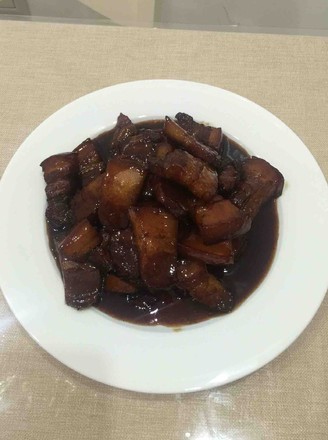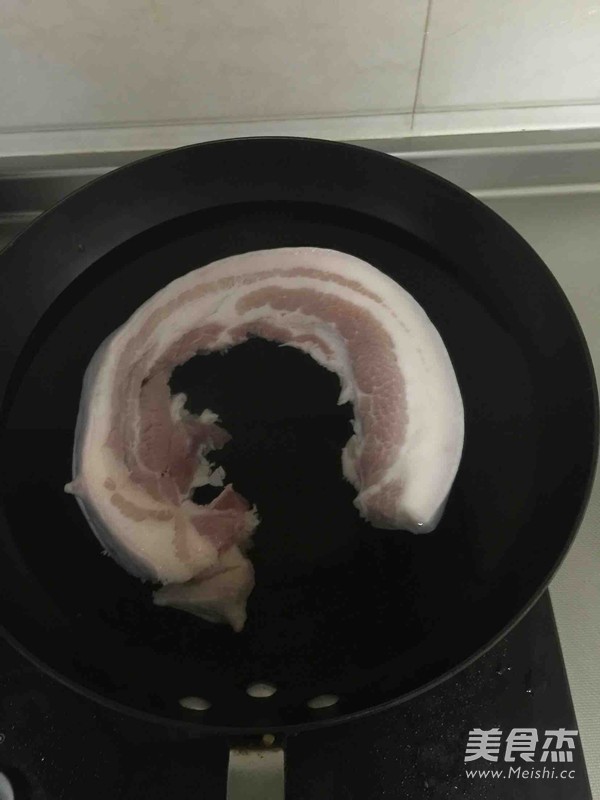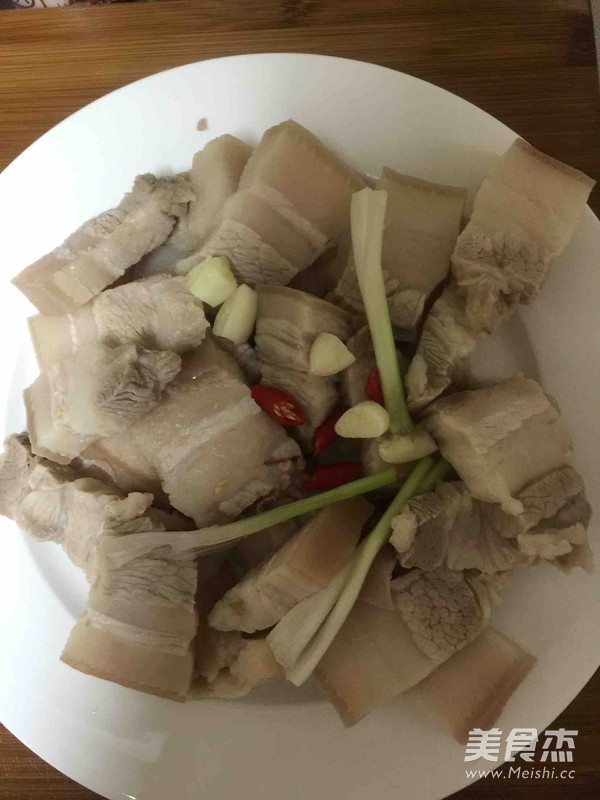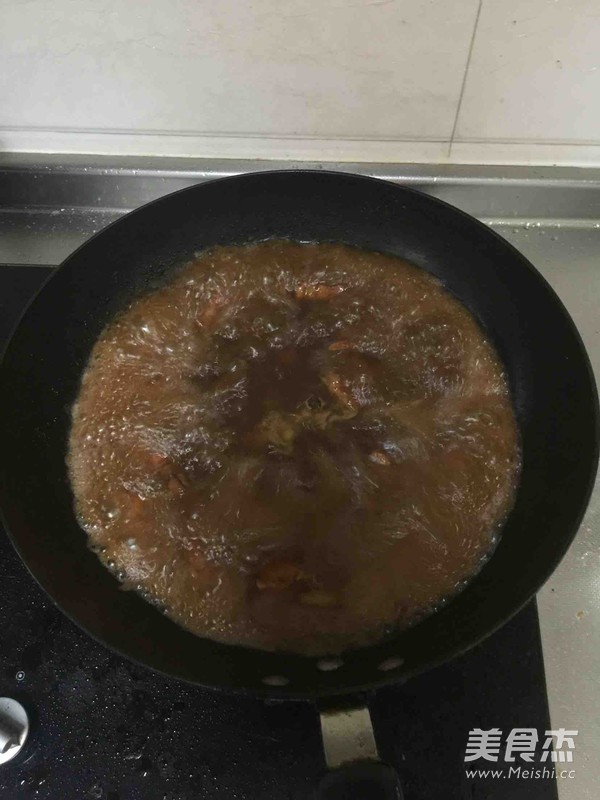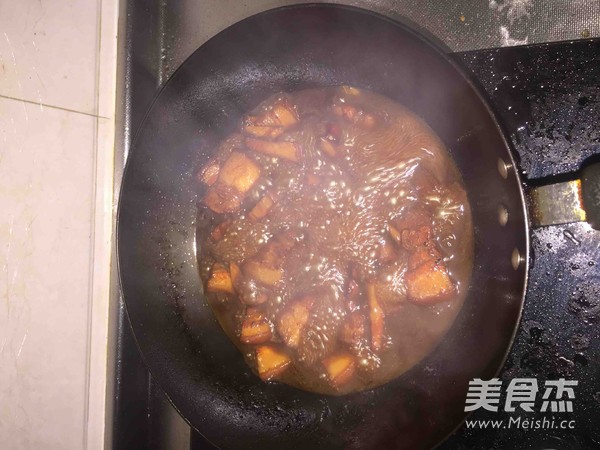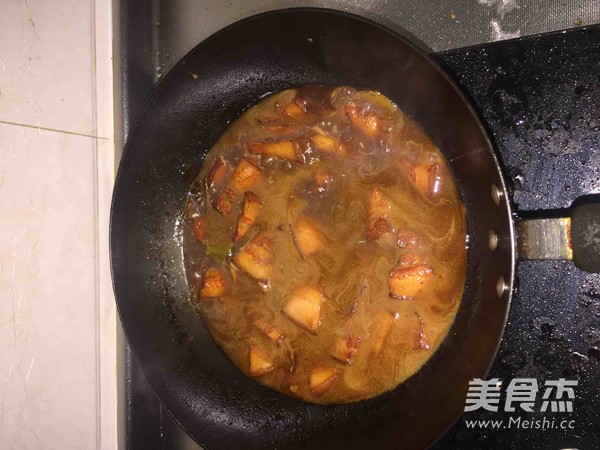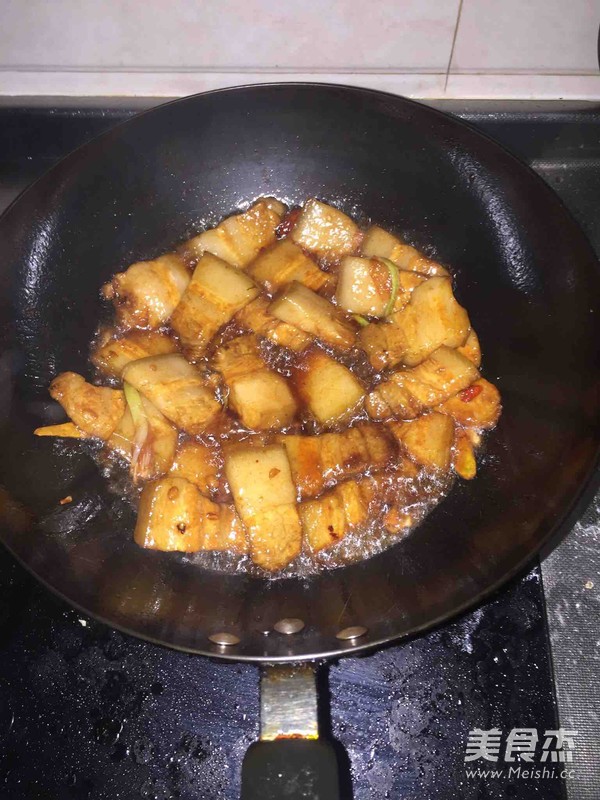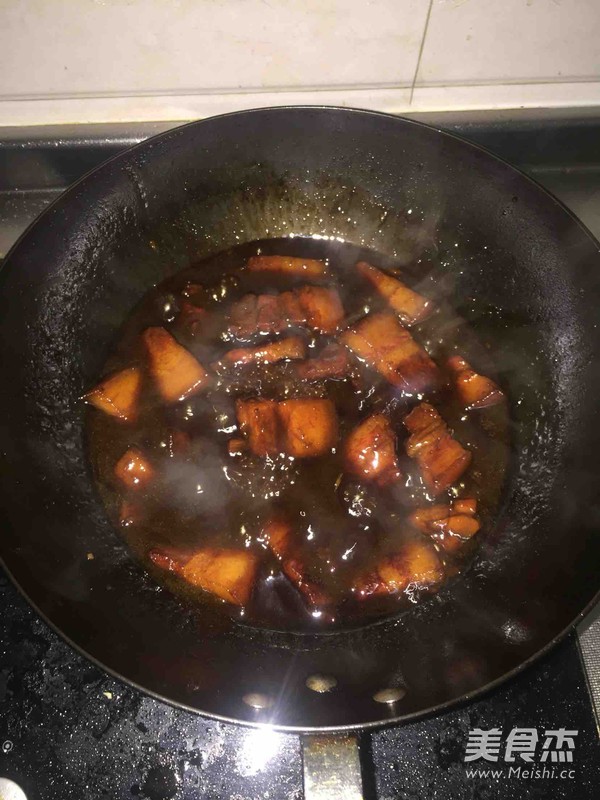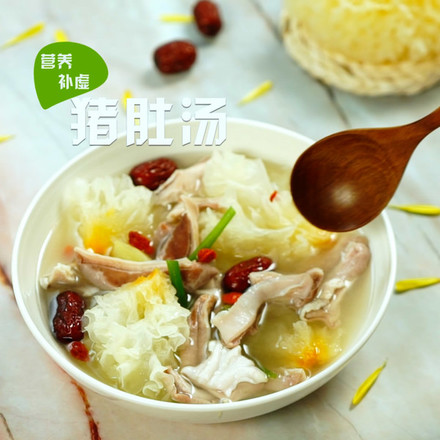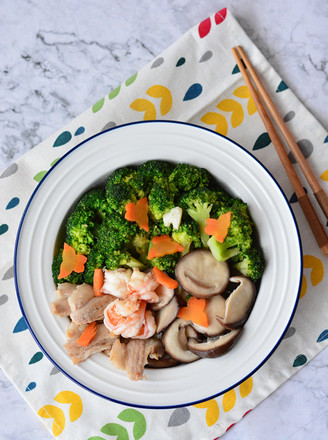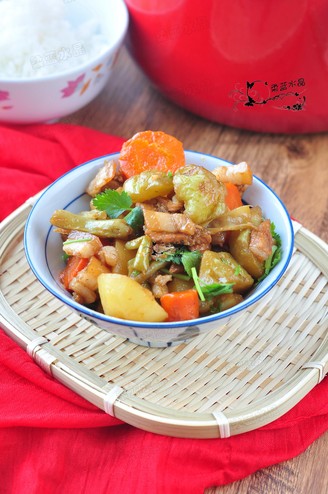Private Secret Braised Pork
1.
Accessories are ready
2.
Wash the pork belly and scrape the surface of the skin with a knife to remove the remaining dirt on the surface.
3.
Put water in the pot, submerge the pork belly, add ginger, garlic, cooking wine, and bring to a boil. After boiling, boil for 5 to 10 minutes. After the meat is broken, take it out.
4.
Rinse the cooked meat with clean water again (clean, cool down), filter the floating matter with the filter screen, and save the remaining oil and water for later use. If the oil and water are too dirty, don't use it, it may not be cleaned before. clean.
5.
Cut the pork belly into pieces, the meat piece with belt fat and lean meat is the best taste (If you find that the meat layer is not boiled inside, you can add some water to cook it again, or use boiling water to soak it)
6.
Put the oil into the pot, heat for 6 minutes, add ginger, garlic, and small red pepper. After 3 to 5 seconds, put the cut pork belly into the pot, turn the heat to high and stir fry (add a little garlic while adding the pork belly Put it in the pot with the chili)
7.
Stir-fry for a minute, add cooking wine (yellow wine is more fragrant), stir-fry for a while, add two spoons of char siu sauce, stir-fry a few times, add light soy sauce, stir-fry for a while, add soy sauce and continue stir-fry, wait until the fat is out Add a spoonful of salt after the oil, and stir-fry for a while. (The stir-frying of this process depends on your personal situation, and you will have experience after doing it a few times. If there is a slight stickiness during the process, add a little bit of the oil and water that was previously filtered)

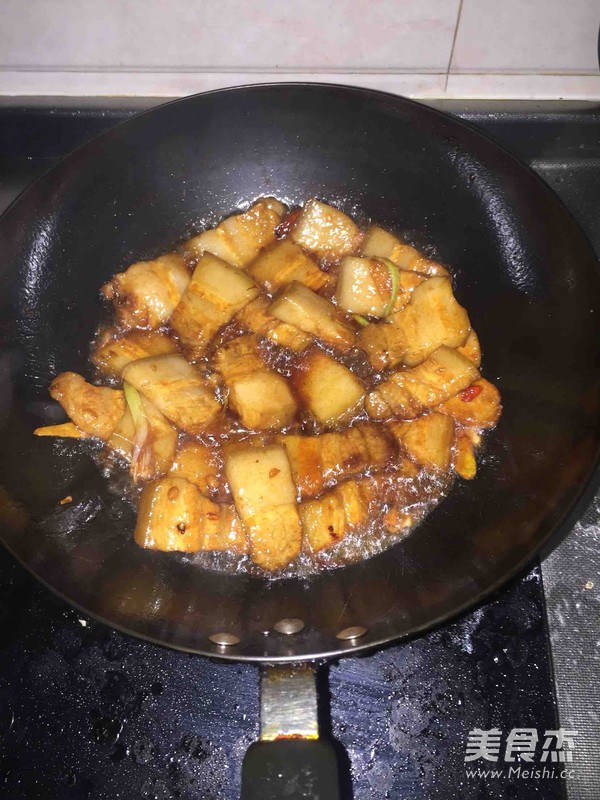
8.
After the stir-frying is complete, add the previously filtered oil and water to submerge the meat, add star anise and bay leaves (not too much, these ingredients will cover the original aroma of the meat), turn to high heat and simmer. (When you put in the filtered oil and water, confirm the temperature of the oil and water. It is not easy to be too hot. Low temperature is good. If it is too hot, add cold water and mix it. Do not use cold water if the temperature is almost the same. Warm water mainly makes the color of the meat a lot better)
9.
Observe the water level. When the water level (the broth) is about the middle and lower level of the meat, turn the meat a bit, add the previously filtered oily water (still warm water), submerge the meat, add rock sugar, adjust the heat to medium and low and continue to simmer.
10.
After simmering for a while, observe the water level again. When it reaches the middle and lower level of the meat, add the filtered oil and water again, put it even with the meat, add a few pieces of rock sugar, reduce the heat and simmer.
11.
Before adding oil and water in the previous step, use chopsticks to dip some soup, try the saltiness, whether the meat is too sweet, and if the taste is weak or too light (basically not weak), add a little salt and sugar, if not needed No need to add salt or rock sugar.
12.
Pay attention to the water level during the third simmering process. When the water level reaches the middle level, try to poke the meat with chopsticks, or try eating it directly to see if the lean meat is rotten or sticky. If the lean meat is not rotten, then cook it. After a while, taste the lower level of the water level. If it is not rotten, add a little oil and water and continue to simmer (it will basically be rotten by this point, and it is less likely to be judged based on the actual situation and personal taste), if the lean meat is rotten Or meet your preferences
13.
If the lean meat has rotten or meets your preferences, boil the water to the middle and lower layer to collect the juice (if you like juicy, you can decide whether to continue cooking according to personal taste). When the soup is running out, add MSG and stir. , You can eat the pot after tens of seconds. (Leave some soup for a better taste)
Tips:
1. The choice of meat is also very important. After cooking it many times, the freshness of the meat is

